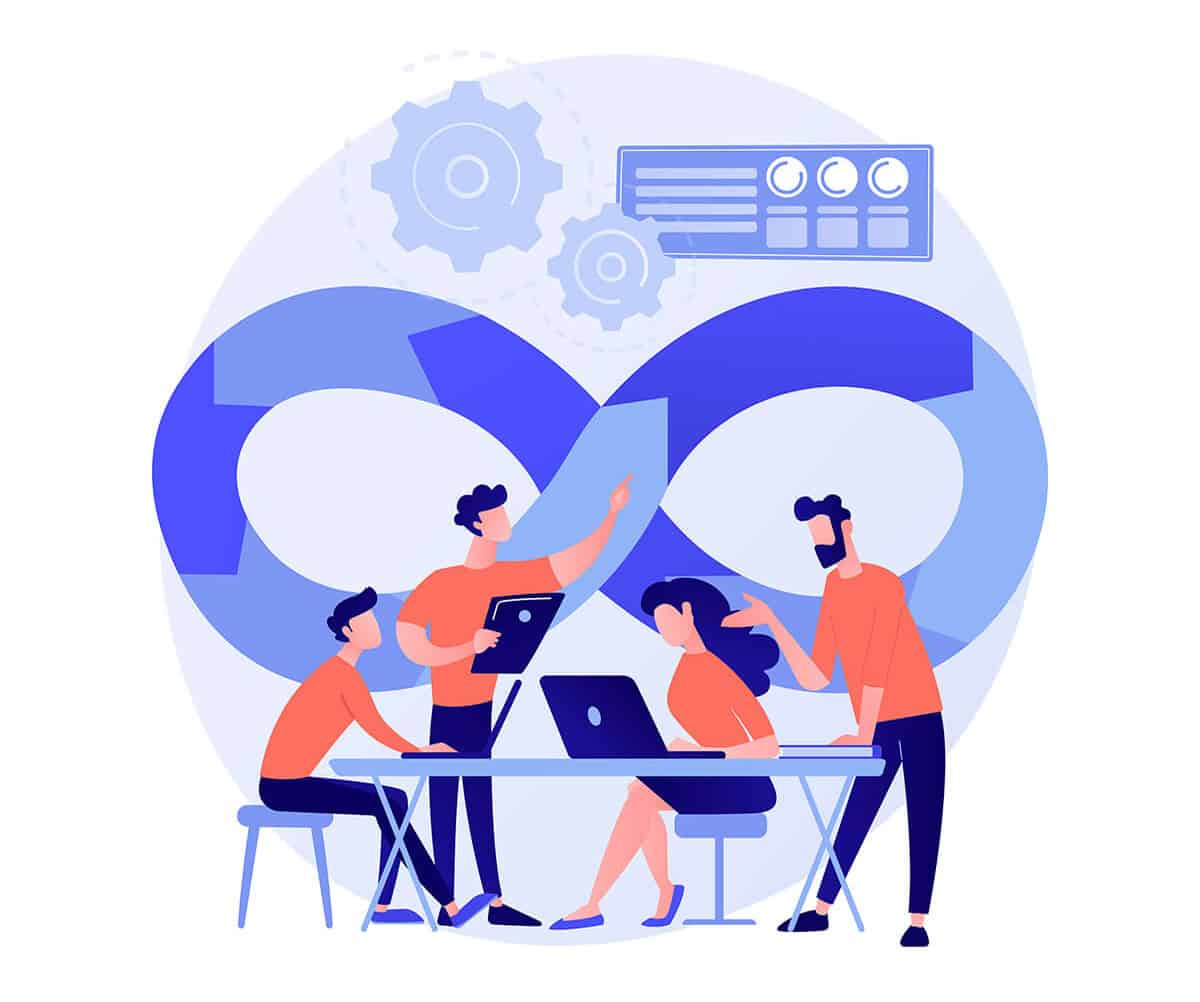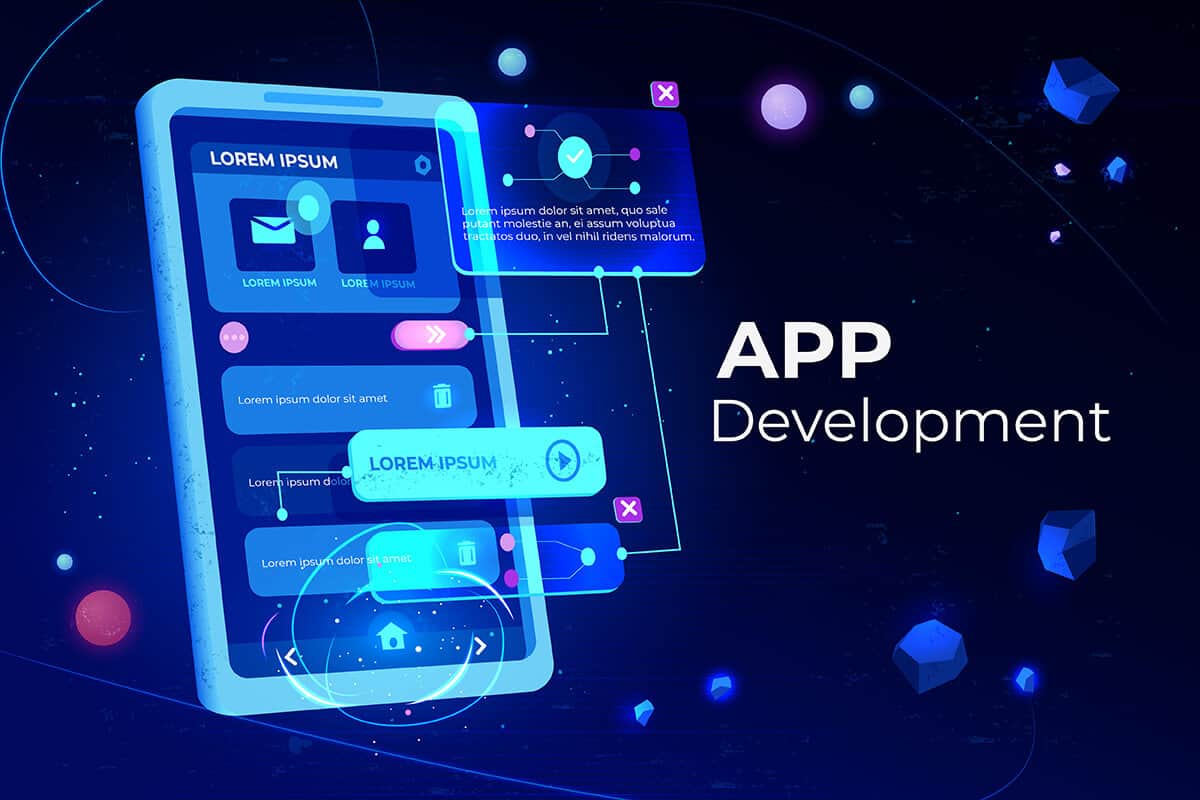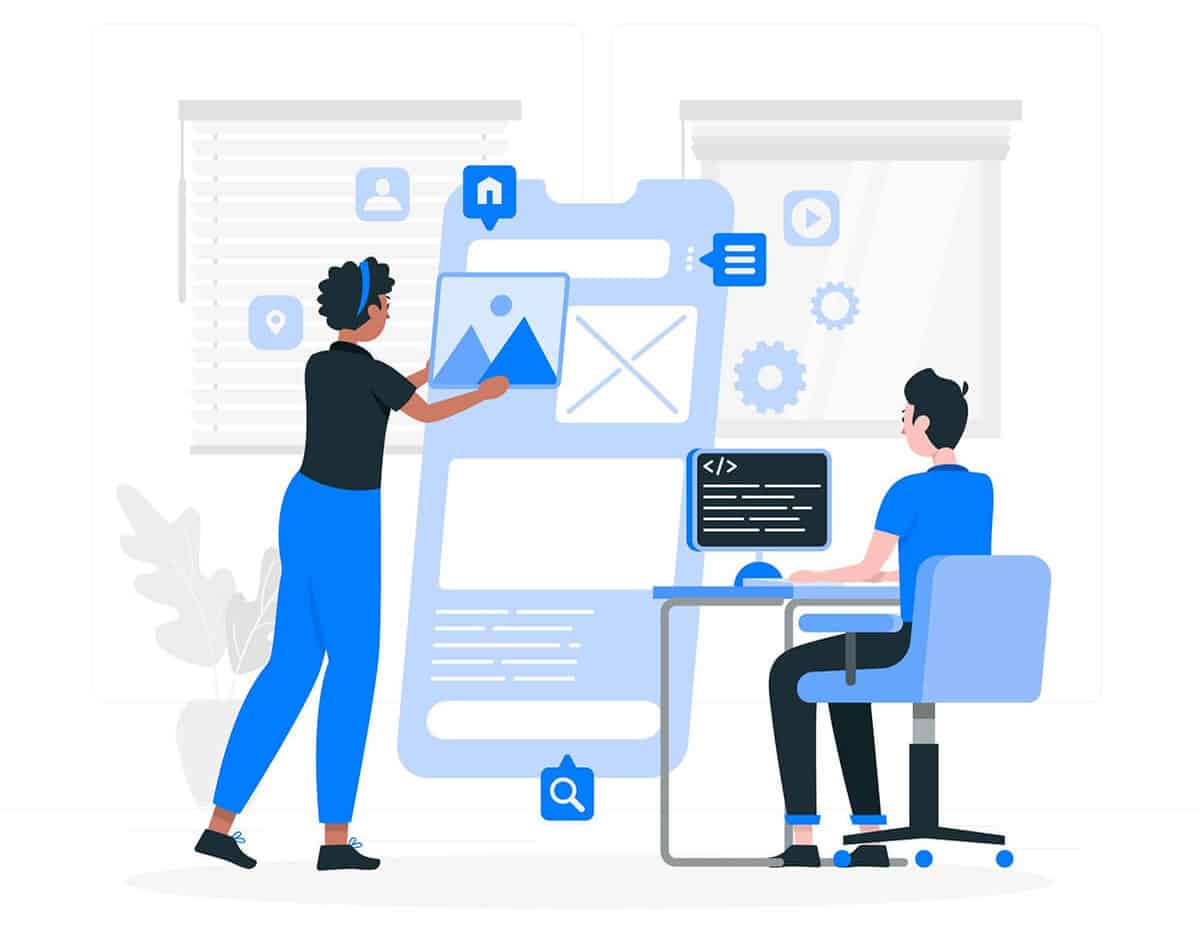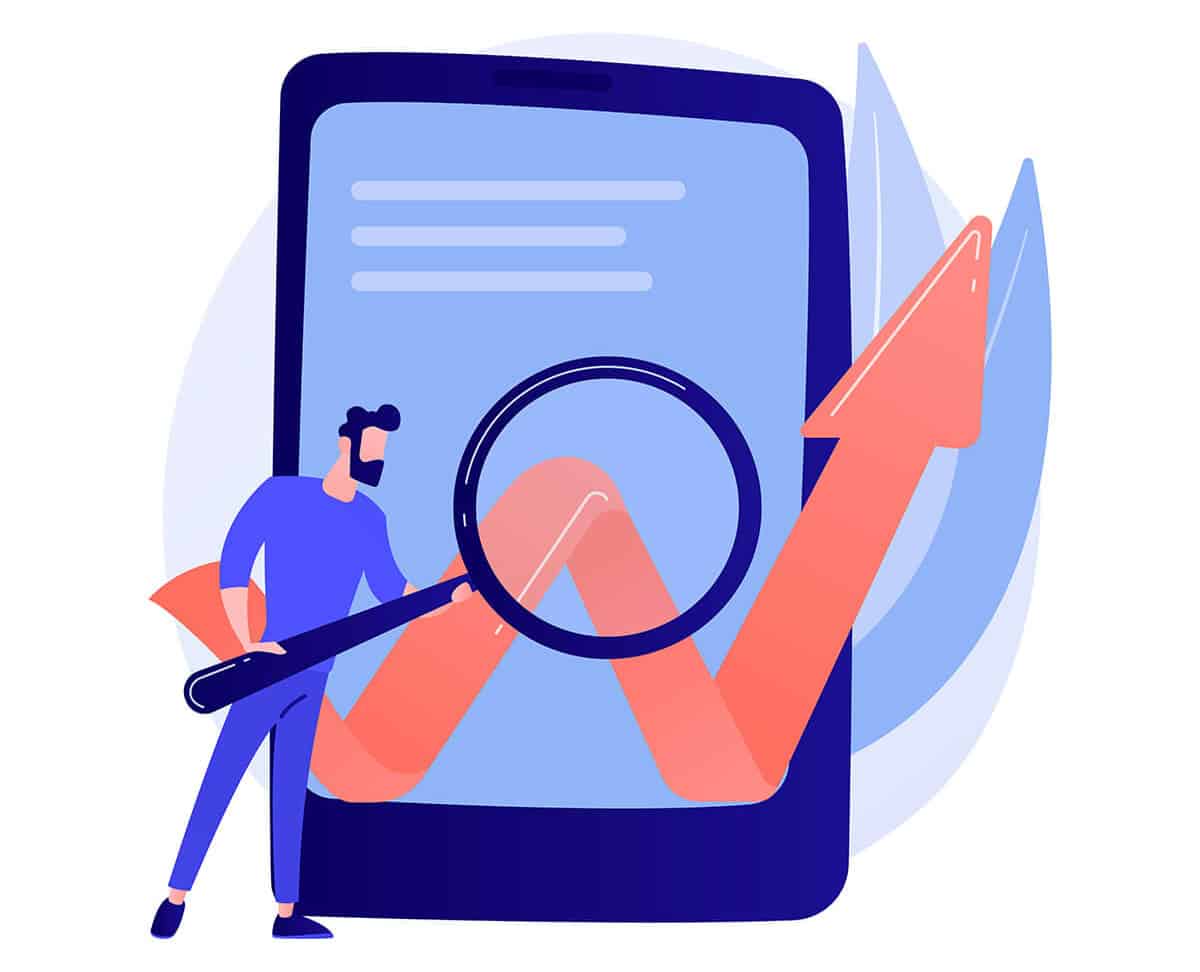Designing Mobile Apps With Php
How to Make an App
The latest trend in the tech world is mobile app development. How to create an app? There are so many benefits of having your own application for different devices, but it takes patience and dedication to create an awesome product that people will love! Thankfully, there's already been some groundwork done by those who've come before you; let their experiences be your guide as you build an app that may be your next big invention.
By Salman Azhar | Reading time: 15 min

- 1. Strategy
- 2. Analysis and Planning
- 3. UI / UX Design
- 4. App Development
- 5. Testing
- 6. Deployment and Support
How to Develop a Successful Mobile App: Step by Step Guide
Apps have become so mainstream that the number of apps available in each app store is now starting to outnumber people. With about 2.56 million apps on Google Play Store and 1.85 million apps on the App Store, developers are realizing they need a well-crafted high performing app if they want their business to stand out against competition. Which has given rise to complex questions like how to build an app and many others:
-
How to create android app?
-
How to code an app for android?
-
How to make an app for Android device?
-
What are the benefits of creating mobile applications?
-
And what are the challenges involved in app development process?
-
What is the significance of mobile apps in our life, career or business?
And can you still learn how to create android apps without coding? The answer to these question is a big yes. It is now possible to create a mobile app without writing any code.
This has been made possible by new tools and technologies that have come onto the market in recent years, giving anyone with an idea or concept for a game or application the ability to bring it into reality – no coding required!
But regardless of what technology you use, adhering to proven processes will help speed up success and reduce costs overall. It's not just about saving time on development: there are numerous benefits from doing things right out of the gate!
When developing an enterprise mobile app, it's important to have the right plan in place. This is why we recommend following this development process when designing an app.
1. Strategy
How do you create an app? As the first step of developing a successful mobile app, you must plan how to take your idea and make it into an effective tool for thousands.
This is done by analyzing what purpose the app will have, determining who may be using said apps in addition to any other factors that might come up during development process such as different objectives among users or recommended strategies within mobility strategy.
You'll need to take the time upfront and invest in your vision. It's not enough just to have an idea; you must also:
-
Establish goals for success

A clear picture of what it is that we are trying to accomplish so as to minimize any confusion or doubt about why this app needs to be developed at all.
However expensive developing may seem up front (averaging $38-$91K), having clarity regarding our strategy will help us be more certain when selecting which platform best suits our purposes -and once completed allows us to launch into phase 2 confident knowing how most effectively we can achieve user adoption by being selective along the way!
2. Analysis and Planning
After you have identified the requirements for your app, prepare a product roadmap to invent an app.
Your roadmap should include prioritizing what needs to be done first and when it will get completed as well as grouping all of these tasks into delivery milestones that are based on how much time is left or estimated until they need to be finished up.
If you're running low on time, resources or money but still want to launch your product as quickly and cheaply as possible with the goal of getting feedback for subsequent iterations then define what is absolutely necessary about your MVP.
This can save a lot of development costs in future releases while generating valuable information from real users early-on.

Part of the planning phase includes identifying skills needed for development initiative; identification can start by thinking about target operating systems – iOS vs Android.
IOS and Android mobile platforms are different, so developers must specialize in one or both of these operating systems (OS) depending on what goals they hope to achieve.
If building a mobile app for multiple OSes sounds like something your company wants, then having at least one developer with experience working within each platform becomes essential as well as understanding their specific programming languages and design considerations.
Have you picked the name for your app yet? You're going to need a unique one, so make sure it's not already in use!
3. UI / UX Design
The app design should have one purpose which is to go give the best user experience.
The success of your mobile app can't be determined on how flashy the design looks but rather if people are adopting and benefiting from all its features.
Which means creating excellent user experiences that make your application both interactive, adaptive, as well as being simple enough to use yet informative so they'll stay engaged longer.
A well-designed mobile app is more than just a pretty design – it needs to be user friendly and interactive.
A great UI/UX designer will create an intuitive, easy experience for users by blending simplicity with interactivity.

Information Architecture & Workflows
Designing a mobile app is like building and intricate 3D puzzle, with many different components coming together to form the finished product.
The first step of this process is figuring out what data your app will need in order to function properly for its users – which can be as simple or complex as you want it.
Businesses face a great challenge when it comes to app development: they have multiple employees with different levels of access and privileges.
This is what enterprise mobile solutions are for! Workflow diagrams help identify every possible interaction a user has with the app, as well as how that person navigates through it.
Wireframes
Mobile app designers often start their work with sketches on paper. These are the earliest form of an idea that a designer has, and it's what begins to flesh out the conceptual layout for your future mobile application design.
Wireframes are digital forms of sketching which give visual structure to functional requirements in order to create something aesthetically pleasing while still maintaining functionality at its core – they're also referred as low-fidelity mockups because color schemes don't matter here!
Designing wireframes is a quick and cost-effective approach for designing app layouts and iterating through them in the design review process. Doing so allows you to explore your ideas quickly, as well as create intuitive user experiences that are device specific (whether it's an iPhone or Android phone).
If you're looking at creating some kind of application layout – whether it be on an iPad or iPod Touch, use this technique! Wireframing will allow you to get feedback early on about what should go where without having too much work done upfront; plus if there needs modifications made down the line they can easily happen while maintaining its original purpose.
Style Guide
Style guides are the perfect place for documenting all of your company's design standards, from branding guidelines to navigating through an app.
How will your app's design reflect the company's brand?
Will it be in a trendy font or antique script that reflects our traditional values, or should we go with something more modern and contemporary to show how progressive we are as an organization?
The choice is yours.
Mobile app design is about not only functionality but also the look and feel of your product.
Establishing a style guide early on as part of your mobile app development process improves productivity for developers, while following guidelines helps keep an apps's visual consistency.
Consider these two major players: Apple iOS app designs or Google Android App Design which offer different advice to make sure you can build an attractive yet functional product according to what customers are looking for in their devices!
Mockups
Mockups are the final renderings of an app's visual design. Mockups come from applying your style guide onto wireframes and as you continue to finalize on your app, information architecture, workflow, or aesthetics may need some modifications.
Adobe Photoshop is often used for creating high-fidelity mock ups because it allows designers to easily make changes that will reflect in any other pieces of work they do with their program without having to recreate a whole new file each time – saving them both time and energy!
Prototype
Prototypes are a more dynamic and interactive way to show your app's functionality, especially for simulating the user experience.
Invision and Figma offer tools that make prototypes easy-to-create click-thru mockups of how an application will feel once it launches.
Prototyping enables you to visualize your app while it's still in development so that during later stages when changes may need to happen due to unforeseen issues or failures, this can all be done without impacting other areas of the project too heavily – meaning prototyping is always worth doing!
4. App Development
It can be hard choosing the right development tools for your mobile app. Before you start programming, try looking at these three parts:
-
The backend or server technology – what type of database will support your data?
-
API(s) and other integration points that may need connecting over a network.
-
Finally how does each one work with the design strategy of your app's frontend.

Prototype
Utilizing server-side objects and databases, your mobile app is sure to be a hit. If you are using an existing backend platform, modifications may need to occur for supporting the desired functionality of your mobile application.
API
API- Application Programming Interface is the communication method of the backend server and the app.
Mobile App Frontend
Many mobile apps are made up of interactive user experiences. These use an API and a backend for managing data, but some can also include local storage in order to allow users work without internet access.
You can use almost any web programming language and databases for the backend. For native mobile apps, you have to choose a technology stack required by each OS platform, which includes iOS with Objective-C or Swift; Android uses Java or Kotlin. The key to create an app is picking the best technology stack for your mobile app.

Mobility, not just of people, but also the devices they use to communicate and socialize with each other in every aspect of their lives, is an ever-changing trend.
Mobile technologies advance much faster with new versions or mobile platforms released at a breakneck pace while newer models are coming out all the time.
When it comes to building apps for these constantly evolving software systems that need updating like clockwork, agility is essential so businesses can be ready when consumers want them on hand.
App building with code Vs without code
With the rise of app development platforms, you don't have to be a programmer to make an app for your small business – all you need is some creativity.
So if you're an up-and-coming startup, or in charge of small business IT, you might be looking for a quick and easy way to build apps that meet your specific business needs.
Thankfully, there are some excellent free no-code app development platforms available for this purpose. They speed up the process of building business applications with drag-and-drop interfaces and ready-made components, without the need for coding.
To make it even easier to build apps with no coding required, several free and open-source development platforms can be used.
Here's a list of some:
With coding, there are many possibilities for app development. There are different programming languages that can be used to produce an app. There are separate programming languages for web development, game engine development, and mobile apps.
Many platforms exist which make the process of creating an app easier by abstracting some of the coding (i.e., Javascript is embedded in HTML files). While there is no perfect platform there are some better than others for what you wish to create.
Some of the platforms for app development that require coding are:
Some platforms are free to use, while others require a fee. All of the above platforms offer both paid and unpaid tiers.
However, it must be noted that once an app goes beyond the user limit of the unpaid plan, further users may incur a cost. There are clear distinctions in their functionality, capabilities, and scope of use cases for each platform.
It is up to you to decide which platform best fits your needs.
5. Testing
When developing a mobile app, it is important to start with quality assurance.
Without thorough QA testing during the development process your application will not be stable, usable and secure.
One way of ensuring comprehensive QA testing on your app is by preparing test cases that address all aspects of an app's functionality so you can make sure every aspect has been thoroughly tested before releasing it for public use.
As with all great software, there is a lot of detail and precision that goes into making it. When the process starts out as just an idea in somebody's head or on paper, you have to make sure everything is done right from the beginning before moving forward so that later down the line things don't become too complicated or muddled up.
One way this can be achieved when developing mobile apps for smartphones is through test cases which are used at every stage of development to ensure quality assurance throughout its life cycle – not only during testing but also by involving your QA team early on in analysis design stages where they will provide crucial feedback.
These test are important:
User Experience Testing
One of the most important aspects in mobile app testing is ensuring that your final version reflects what you designed.
The visuals, workflow and interactivity are all things which give a user their first impression when they use an app; make sure these parts of your design match up by using consistent fonts, style treatments color scheme or padding between data to create a cohesive experience for them.
Functional Testing
It is difficult to predict every scenario but the mobile app functionality is critical.
There are many reasons why you should seek out a wide range of testers, including the fact that chances for bugs go up if two people have different outcomes from testing.
For example, both users might enter data into the same form but one user enters more characters than another—which means some features won't work as they should and it would be hard to uncover with only one tester!
Simply, but there's no better way around this issue then by using as many potential test subjects possible.
The only purpose of this is to see if the apps function as it should. It could be broken down into further two parts:
- System Testing (App as a whole)
- Unit Testing (Individual Functions)
Performance Testing
There are many areas to look at in performance testing:
- Screen loading
- Response time
- Size of the app
- Bandwidth consumption
The performance testing is also a vital part of the development. It's important to simulate how many people are using what you've developed at any given time in order to ensure that its capabilities will help sustain high levels without crashing or having other issues related with overloads.

Performance Testing
As more and more employees use smartphones for work, security becomes a major concern.
Apps are especially susceptible to hacking when they're not developed with security in mind from the beginning.
Often time's companies hire outside agencies that perform through testing on their applications before releasing them into the wild!
As your QA team will attest, it is possible to do some things during development that can make an app much safer than if you left these measures until later down the line.
With today's technology, mobile app design can be a challenge. User sessions should only last for 10 minutes or less on the device and backend to avoid any potential security risks.
If your system stores user credentials when it is convenient so users don't have to re-login in order to access their accounts, you must ensure that this data is being protected by using trusted services which will keep them as safe and secure as possible from outside parties who might want unauthorized access of personal information such as passwords or credit card numbers.
Device and Platform Testing

The world of mobile devices is constantly changing. With new products coming in every 12 months as well as firmware and operating system updates, it can be hard to keep up with all the changes that are happening each day.
Multiple manufacturers use Android for their software but they customize it based on what customers want from a device such as Samsung's Galaxy phones or LG's G series flagships which come available in different sizes like 5″ screens (Galaxy S5) or large screen devices at 6-8″ (G4).
Apple has a lot more controlled environment, since they have the control over the OS and the hardware. But they have a lot of devices out there in market.
Now this is where the app development and web testing differs. Web testing can be done easily on a windows chrome. But the smooth running of app is whole different story, it should be tested on multiple devices to ensure smooth running.
In today's technology-driven world, it is no surprise that companies are developing their enterprise mobile apps for one particular platform.
The number of different devices and operating systems available to consumers has increased exponentially over the past decade; however there can be some drawbacks when a company takes this approach. Different platforms may have varying features or UI elements which could alter how an app functions on each device type.
It also poses challenges in terms of testing and ongoing maintenance costs as well as headaches with managing multiple OSs from various manufacturers (who often offer competing hardware).
Testing is a very important part of the app development process. Having a comprehensive testing strategy is very important.
6. Deployment & Support
You need to have a developer account before you can launch your app on the Apple Store or the Google Play Store.
An app's release in the app store requires preparing metadata including:
After the submission of the app it may take a few days to process by the respective store, depending how closely your app is to the guidelines of the said store.
After the app is approved and uploaded, monitor its usage though analytic platforms and track KPIs for measuring the success of the app. Checking crash reports and bugs are also important.

Unlike web apps where you can provide an instant update of patch release, the mobile app will have to go through the same review process as the initial submission. So it is important to keep update to date with the progress of the app, and encourage consumers to give feedback.
Conclusion
App development is a never ending process. It doesn't end after the initial submission, as you receive user feedback and build on it.
If your company does not have the resources simply, think of outsourcing, companies like Platri IT offer their services for web, software development and more, it has been a leading mobile app development company in Germany.
Over the years, Platri has provided mobile app development services to different niche companies.
If you have the resources (developers), who know how to make an app, then following the steps will ensure successful launch of the app.
Hope this article was insightful in helping with the process of how to create an app.
Share This Story, Choose Your Platform!
-
Platri IT GmbH
Auf dem Dahlacker 8
44807 Bochum
© Copyright2021 | Alle Rechte vorbehalten
Designing Mobile Apps With Php
Source: https://platri.de/how-to-make-an-app/
Posted by: calderonades1986.blogspot.com

0 Response to "Designing Mobile Apps With Php"
Post a Comment